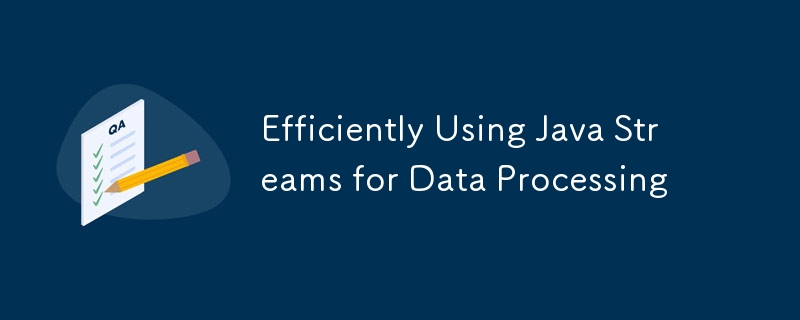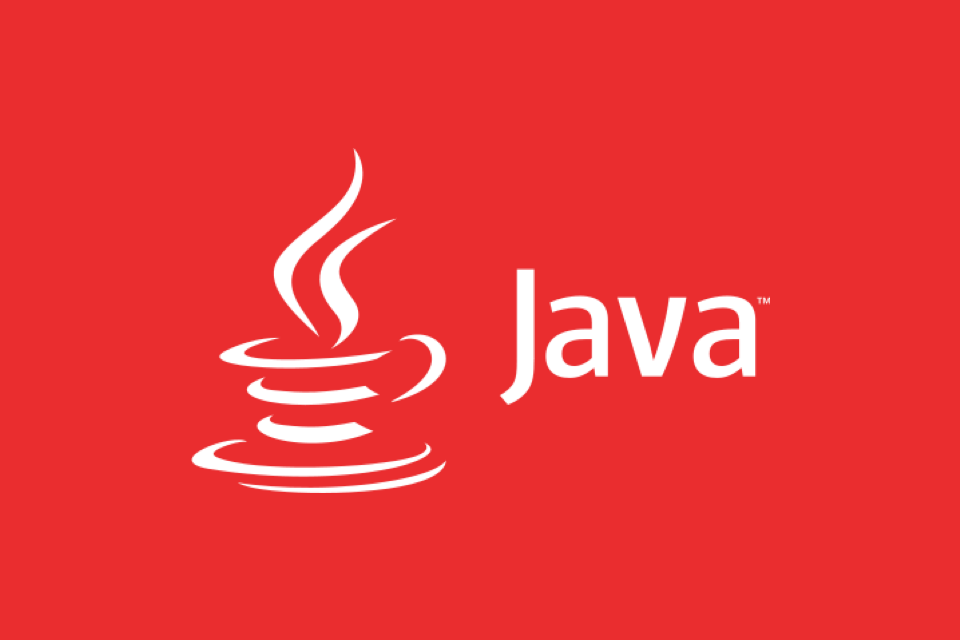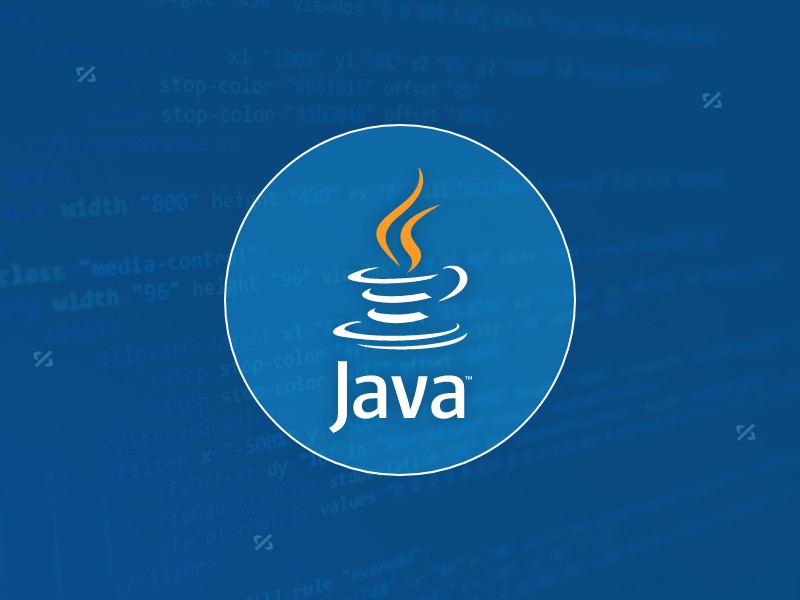Five points to pay attention to when using Java Streams: 1. Intermediate operations (such as filters, maps) must be executed through terminal operations (such as collect, forEach), otherwise it will not take effect; 2. Avoid modifying external variables in intermediate operations to prevent concurrency problems; 3. Select the terminal operation type according to the scene, such as anyMatch, which is more efficient to judge existence; 4. Parallel streams are suitable for complex operations in large data volumes, while small data increases overhead and is sensitive to sequence; 5. Reduce object creation and packing, and give priority to basic type streams such as IntStream to improve performance.

Java Streams is a powerful feature introduced in Java 8 to simplify the processing of collection data. Many people use it to write more concisely, but it still takes some skills and understanding to really use Streams efficiently.

Understand the difference between intermediate operations and terminal operations
Stream operations are divided into intermediate operations (such as filter , map ) and terminal operations (such as collect , forEach ). Intermediate operations will not be executed immediately, they are "lazy loading" and will only actually start processing data when encountering terminal operations.

This is crucial: if you only write a few intermediate operations but don't have terminal operations, then Stream actually does nothing. for example:
list.stream().filter(item -> item.isValid()); // No terminal operation will not be executed
suggestion:

- Intermediate operations can be called in chains, but in the end there must be a terminal operation.
- Avoid side effects (such as modifying external variables) in intermediate operations, which can easily cause concurrency problems.
Reasonably select the terminal operation type
Different terminal operations have different performance and applicable scenarios. For example:
-
collect(Collectors.toList())is suitable for collecting results; -
forEach()is suitable for traversal execution actions; -
reduce()is used for aggregation calculation; -
findFirst()andfindAny()have different behaviors in parallel streams.
A common misunderstanding is that when you only need to determine whether there are elements that meet the conditions, you mistakenly use filter().collect() and then check whether it is empty. The correct way is to use anyMatch() directly:
// Not recommended boolean found = list.stream().filter(item -> item.isValid()).collect(Collectors.toList()).size() > 0; // Recommend boolean found = list.stream().anyMatch(item -> item.isValid());
This will terminate the processing process in advance and improve efficiency.
Parallel flow is not a universal accelerator
Java provides parallelStream() to take advantage of multi-core advantages, but this does not mean that it is always faster. In fact, when using parallel streams is used in small data volumes or simple operations, it may actually cause additional overhead due to thread scheduling.
suggestion:
- When the data volume is large (such as more than tens of thousands) and the operation is complicated, parallelism will be considered.
- Sequence-sensitive operations (such as
findFirst()) may not achieve the expected results in parallel streams. - Pay attention to the synchronization of shared resources when using parallel streams.
For example, the following example:
int sum = numbers.parallelStream().mapToInt(Integer::intValue).sum();
If numbers are large, they can indeed increase the speed; but if there are only a few dozen elements, it is more appropriate to use a normal stream.
Try to avoid unnecessary object creation and boxing
The syntax of the Stream API is elegant, but you also need to pay attention to performance details. For example, frequent use of map() to create new objects will increase GC pressure. Also, it is best to use special Streams for processing basic types, such as IntStream and DoubleStream , rather than generic Streams.
For example:
// May cause packing overhead int sum = list.stream().mapToInt(Item::getValue).sum(); // Better int sum = IntStream.range(0, 100).sum();
Also, if you just traversal without returning values, you should give priority to normal loops, especially in hotspot code.
Basically that's it. Stream is very convenient, but to write clear and efficient code, you still have to make trade-offs based on the specific scenario.
The above is the detailed content of Efficiently Using Java Streams for Data Processing. For more information, please follow other related articles on the PHP Chinese website!

Hot AI Tools

Undress AI Tool
Undress images for free

Undresser.AI Undress
AI-powered app for creating realistic nude photos

AI Clothes Remover
Online AI tool for removing clothes from photos.

Clothoff.io
AI clothes remover

Video Face Swap
Swap faces in any video effortlessly with our completely free AI face swap tool!

Hot Article

Hot Tools

Notepad++7.3.1
Easy-to-use and free code editor

SublimeText3 Chinese version
Chinese version, very easy to use

Zend Studio 13.0.1
Powerful PHP integrated development environment

Dreamweaver CS6
Visual web development tools

SublimeText3 Mac version
God-level code editing software (SublimeText3)

Hot Topics
 Difference between HashMap and Hashtable?
Jun 24, 2025 pm 09:41 PM
Difference between HashMap and Hashtable?
Jun 24, 2025 pm 09:41 PM
The difference between HashMap and Hashtable is mainly reflected in thread safety, null value support and performance. 1. In terms of thread safety, Hashtable is thread-safe, and its methods are mostly synchronous methods, while HashMap does not perform synchronization processing, which is not thread-safe; 2. In terms of null value support, HashMap allows one null key and multiple null values, while Hashtable does not allow null keys or values, otherwise a NullPointerException will be thrown; 3. In terms of performance, HashMap is more efficient because there is no synchronization mechanism, and Hashtable has a low locking performance for each operation. It is recommended to use ConcurrentHashMap instead.
 What are static methods in interfaces?
Jun 24, 2025 pm 10:57 PM
What are static methods in interfaces?
Jun 24, 2025 pm 10:57 PM
StaticmethodsininterfaceswereintroducedinJava8toallowutilityfunctionswithintheinterfaceitself.BeforeJava8,suchfunctionsrequiredseparatehelperclasses,leadingtodisorganizedcode.Now,staticmethodsprovidethreekeybenefits:1)theyenableutilitymethodsdirectly
 How does JIT compiler optimize code?
Jun 24, 2025 pm 10:45 PM
How does JIT compiler optimize code?
Jun 24, 2025 pm 10:45 PM
The JIT compiler optimizes code through four methods: method inline, hot spot detection and compilation, type speculation and devirtualization, and redundant operation elimination. 1. Method inline reduces call overhead and inserts frequently called small methods directly into the call; 2. Hot spot detection and high-frequency code execution and centrally optimize it to save resources; 3. Type speculation collects runtime type information to achieve devirtualization calls, improving efficiency; 4. Redundant operations eliminate useless calculations and inspections based on operational data deletion, enhancing performance.
 What is an instance initializer block?
Jun 25, 2025 pm 12:21 PM
What is an instance initializer block?
Jun 25, 2025 pm 12:21 PM
Instance initialization blocks are used in Java to run initialization logic when creating objects, which are executed before the constructor. It is suitable for scenarios where multiple constructors share initialization code, complex field initialization, or anonymous class initialization scenarios. Unlike static initialization blocks, it is executed every time it is instantiated, while static initialization blocks only run once when the class is loaded.
 What is the Factory pattern?
Jun 24, 2025 pm 11:29 PM
What is the Factory pattern?
Jun 24, 2025 pm 11:29 PM
Factory mode is used to encapsulate object creation logic, making the code more flexible, easy to maintain, and loosely coupled. The core answer is: by centrally managing object creation logic, hiding implementation details, and supporting the creation of multiple related objects. The specific description is as follows: the factory mode handes object creation to a special factory class or method for processing, avoiding the use of newClass() directly; it is suitable for scenarios where multiple types of related objects are created, creation logic may change, and implementation details need to be hidden; for example, in the payment processor, Stripe, PayPal and other instances are created through factories; its implementation includes the object returned by the factory class based on input parameters, and all objects realize a common interface; common variants include simple factories, factory methods and abstract factories, which are suitable for different complexities.
 What is the `final` keyword for variables?
Jun 24, 2025 pm 07:29 PM
What is the `final` keyword for variables?
Jun 24, 2025 pm 07:29 PM
InJava,thefinalkeywordpreventsavariable’svaluefrombeingchangedafterassignment,butitsbehaviordiffersforprimitivesandobjectreferences.Forprimitivevariables,finalmakesthevalueconstant,asinfinalintMAX_SPEED=100;wherereassignmentcausesanerror.Forobjectref
 What is type casting?
Jun 24, 2025 pm 11:09 PM
What is type casting?
Jun 24, 2025 pm 11:09 PM
There are two types of conversion: implicit and explicit. 1. Implicit conversion occurs automatically, such as converting int to double; 2. Explicit conversion requires manual operation, such as using (int)myDouble. A case where type conversion is required includes processing user input, mathematical operations, or passing different types of values ??between functions. Issues that need to be noted are: turning floating-point numbers into integers will truncate the fractional part, turning large types into small types may lead to data loss, and some languages ??do not allow direct conversion of specific types. A proper understanding of language conversion rules helps avoid errors.
 Why do we need wrapper classes?
Jun 28, 2025 am 01:01 AM
Why do we need wrapper classes?
Jun 28, 2025 am 01:01 AM
Java uses wrapper classes because basic data types cannot directly participate in object-oriented operations, and object forms are often required in actual needs; 1. Collection classes can only store objects, such as Lists use automatic boxing to store numerical values; 2. Generics do not support basic types, and packaging classes must be used as type parameters; 3. Packaging classes can represent null values ??to distinguish unset or missing data; 4. Packaging classes provide practical methods such as string conversion to facilitate data parsing and processing, so in scenarios where these characteristics are needed, packaging classes are indispensable.






